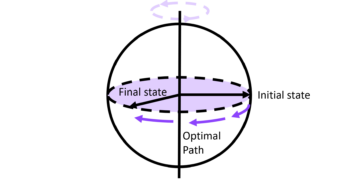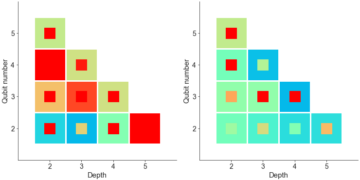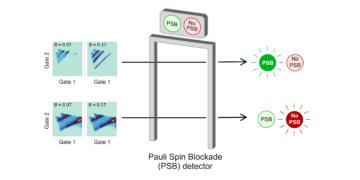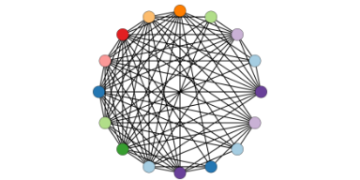Institute for Quantum Studies & Schmid College of Science and Technology, Chapman University, One University Drive, Orange, CA, 92866, USA
Find this paper interesting or want to discuss? Scite or leave a comment on SciRate.
Abstract
In the framework of ontological models, the inherently nonclassical features of quantum theory always seem to involve properties that are fine tuned, i.e. properties that hold at the operational level but break at the ontological level. Their appearance at the operational level is due to unexplained special choices of the ontological parameters, which is what we mean by a fine tuning. Famous examples of such features are contextuality and nonlocality. In this article, we develop a theory-independent mathematical framework for characterizing operational fine tunings. These are distinct from causal fine tunings – already introduced by Wood and Spekkens in [NJP,17 033002(2015)] – as the definition of an operational fine tuning does not involve any assumptions about the underlying causal structure. We show how known examples of operational fine tunings, such as Spekkens’ generalized contextuality, violation of parameter independence in Bell experiment, and ontological time asymmetry, fit into our framework. We discuss the possibility of finding new fine tunings and we use the framework to shed new light on the relation between nonlocality and generalized contextuality. Although nonlocality has often been argued to be a form of contextuality, this is only true when nonlocality consists of a violation of parameter independence. We formulate our framework also in the language of category theory using the concept of functors.
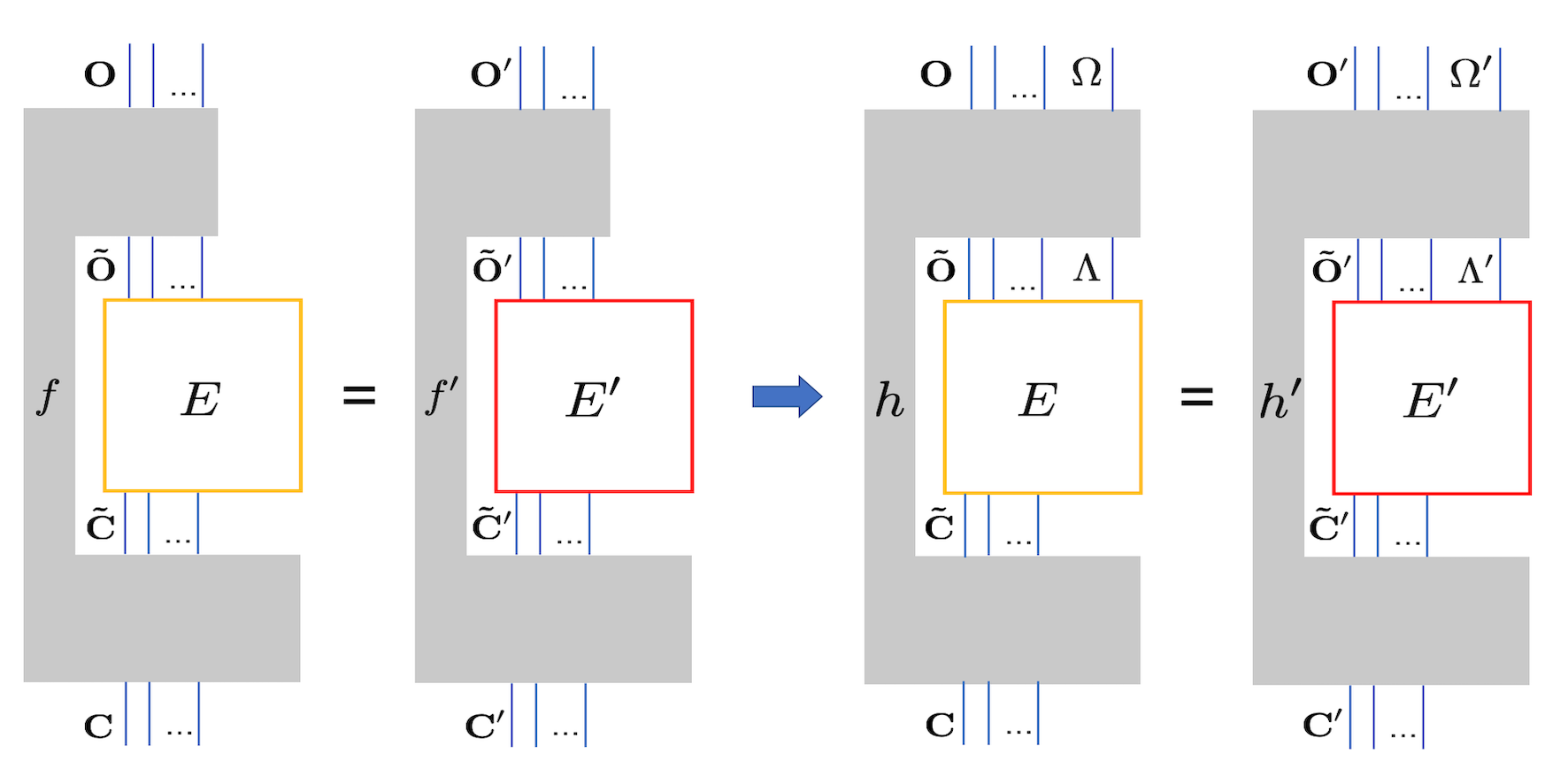
Featured image: A schematic representation of the no fine tuning condition. The condition demands that an operational equivalence, possibly involving classical processings $f,f’$ on two experiments $E,E’$, implies a consistent ontological equivalence involving corresponding ontic classical processings $h,h’$. The classical processings are represented by the grey boxes. The above representation is meant to be read in terms of the conditional probabilities of the observed variables, i.e. $O,tilde{O},O’,tilde{O}’$ (and ontic variables, i.e. $Lambda,Lambda’,Omega,Omega’$) given the controlled variables, i.e. $C,tilde{C},C’,tilde{C}’$, associated with the experiments.
[embedded content]Superdeterminism and Retrocausality – International Centre for Philosophy, Bonn (Germany), 17-20/05/2022.
Contributed talk at Quantum physics and logic, online due to pandemic, 1-5/06/2020
Seminar at Perimeter Institute, Waterloo (Canada), 13/09/2019.
Popular summary
These theorems always work as follows: one assumes a mathematical framework to model reality, termed ontological model framework, defines on this framework a precise notion of classicality, and then proves a contradiction between the statistics of this framework respecting the notion of classicality and the statistics predicted by quantum theory.
The typical lesson that has been taken from these no-go theorems is to conclude that the quantum world is described by an ontological model that violates the classical assumption in question (locality in Bell theorem and noncontextuality in Kochen-Specker theorem). However, this conclusion is problematic, because it forces one to accept that the quantum world involves fine tune properties. The latter are properties that hold at the level of the predicted statistics of quantum theory, but do not hold at the level of the model of reality of the theory (the ontological model). Their appearance at the level of the operational statistics is due to unexplained special choices of the ontological parameters, which is what is meant by a fine tuning. For instance, in the case of a violation of noncontextuality, the statistical equivalences between different procedures (e.g., different decomposition of the completely mixed quantum state of a qubit), arise as a fine tuning of distinct ontological representations. Such fine tunings seem to entail a conspiracy in nature and deny the empiricist roots of science: if two procedures are distinct, why must we experience them, in principle, as equivalent?
We argue that the presence of fine-tuned properties constitutes a serious problem for obtaining an unambiguous interpretation of the nature of the quantum reality and requires an explanation. We see two possibilities to solve the problem of fine tunings in quantum theory. The first is to explain fine tunings as emergent, i.e., provide a physical mechanism that explains their presence (for example, in the case of noncontextuality violation, a mechanism that explains why preparations that are represented as ontologically distinct are operationally equivalent). The second is to develop a new mathematical framework to model reality, different from the standard ontological model framework, that does not suffer of the no-go theorems, i.e., it is absent of fine tunings.
The research program just outlined currently lacks the main basic ingredient: a rigorous mathematical framework for defining and characterizing fine tunings. This is what we do in this work. The idea is that an ontic extension (a more general model of reality than the standard ontological model framework, in that it does not involve causal assumptions) is no fine-tuned with respect to a given property of the physical theory (defined as an operational equivalence in the theory) if such property holds in the ontic extension. Fine tunings capture the common aspect among all the features of quantum theory that are inherently nonclassical according to the no-go theorems. As such, they allow to distill the nonclassicality of quantum theory in one single notion.
Having a precise and mathematically rigorous definition of what captures the nonclassicality of quantum theory is not only crucial for the foundational reasons outlined above, but also to study what is the origin of the quantum computational speed-up. More precisely, with this framework we aim to develop a resource theory to quantify fine tunings and study their role as resources for quantum computational advantages.
► BibTeX data
► References
[1] Hugh Everett. Relative state formulation of quantum mechanics. Rev. Mod. Phys., 29: 454–462, Jul 1957. https://doi.org/10.1103/RevModPhys.29.454.
https://doi.org/10.1103/RevModPhys.29.454
[2] David Wallace. The Emergent Multiverse: Quantum Theory According to the Everett Interpretation. Oxford University Press, 2012.
[3] David Bohm. A suggested interpretation of the quantum theory in terms of “hidden” variables. i. Phys. Rev., 85: 166–179, Jan 1952. https://doi.org/10.1103/PhysRev.85.166.
https://doi.org/10.1103/PhysRev.85.166
[4] Detlef Dürr and Stefan Teufel. Bohmian Mechanics, pages 145–171. Springer Berlin Heidelberg, Berlin, Heidelberg, 2009. https://doi.org/10.1007/b99978_8.
https://doi.org/10.1007/b99978_8
[5] G. C. Ghirardi, A. Rimini, and T. Weber. Unified dynamics for microscopic and macroscopic systems. Phys. Rev. D, 34: 470–491, Jul 1986. https://doi.org/10.1103/PhysRevD.34.470.
https://doi.org/10.1103/PhysRevD.34.470
[6] Angelo Bassi, Kinjalk Lochan, Seema Satin, Tejinder P. Singh, and Hendrik Ulbricht. Models of wave-function collapse, underlying theories, and experimental tests. Rev. Mod. Phys., 85: 471–527, Apr 2013. https://doi.org/10.1103/RevModPhys.85.471.
https://doi.org/10.1103/RevModPhys.85.471
[7] C. Rovelli. Relational quantum mechanics. Int J Theor Phys, 35: 1637–1678, 1996. https://doi.org/10.1007/BF02302261.
https://doi.org/10.1007/BF02302261
[8] Olimpia Lombardi and Dennis Dieks. Modal interpretations of quantum mechanics. In Edward N. Zalta, editor, The Stanford Encyclopedia of Philosophy. Metaphysics Research Lab, Stanford University, spring 2017 edition, 2017.
[9] Časlav Brukner and Anton Zeilinger. Information and Fundamental Elements of the Structure of Quantum Theory, pages 323–354. Springer Berlin Heidelberg, Berlin, Heidelberg, 2003. ISBN 978-3-662-10557-3. https://doi.org/10.1007/978-3-662-10557-3_21.
https://doi.org/10.1007/978-3-662-10557-3_21
[10] Itamar Pitowsky. Quantum Mechanics as a Theory of Probability, pages 213–240. Springer Netherlands, Dordrecht, 2006. ISBN 978-1-4020-4876-0. https://doi.org/10.1007/1-4020-4876-9_10.
https://doi.org/10.1007/1-4020-4876-9_10
[11] Christopher A. Fuchs, N. David Mermin, and Rüdiger Schack. An introduction to qbism with an application to the locality of quantum mechanics. American Journal of Physics, 82 (8): 749–754, 2014. https://doi.org/10.1119/1.4874855.
https://doi.org/10.1119/1.4874855
[12] Robert W. Spekkens. Evidence for the epistemic view of quantum states: A toy theory. Phys. Rev. A, 75: 032110, Mar 2007. https://doi.org/10.1103/PhysRevA.75.032110.
https://doi.org/10.1103/PhysRevA.75.032110
[13] Giulio Chiribella and Robert W. Spekkens. Quasi-quantization: classical statistical theories with an epistemic restriction. In G. Chiribella and R. W. Spekkens, editors, Quantum Theory: Informational Foundations and Foils, pages 1–20. Springer, Dordrecht, 2016. URL https://link.springer.com/book/10.1007/978-94-017-7303-4.
https://link.springer.com/book/10.1007/978-94-017-7303-4
[14] Lorenzo Catani and Dan E Browne. Spekkens’ toy model in all dimensions and its relationship with stabiliser quantum mechanics. New Journal of Physics, 19 (7): 073035, 2017. https://doi.org/10.1088/1367-2630/aa781c.
https://doi.org/10.1088/1367-2630/aa781c
[15] Lorenzo Catani, Matthew Leifer, David Schmid, and Robert W. Spekkens. Why interference phenomena do not capture the essence of quantum theory. arXiv preprint arXiv:2111.13727, 2021. https://doi.org/10.48550/arxiv.2111.13727.
https://doi.org/10.48550/arxiv.2111.13727
arXiv:2111.13727
[16] Travis Norsen. Foundations of Quantum Mechanics. Springer, first edition edition, 2017. ISBN 978-3-319-65867-4. https://doi.org/10.1007/978-3-319-65867-4.
https://doi.org/10.1007/978-3-319-65867-4
[17] John S. Bell. On the problem of hidden variables in quantum mechanics. Rev. Mod. Phys., 38: 447–452, Jul 1966. https://doi.org/10.1103/RevModPhys.38.447.
https://doi.org/10.1103/RevModPhys.38.447
[18] S. Kochen and E.P. Specker. The problem of hidden variables in quantum mechanics. J. Math. Mech., 17: 59–87, 1967. http://doi.org/10.1512/iumj.1968.17.17004.
https://doi.org/10.1512/iumj.1968.17.17004
[19] R. W. Spekkens. Contextuality for preparations, transformations, and unsharp measurements. Phys. Rev. A, 71: 052108, May 2005. https://doi.org/10.1103/PhysRevA.71.052108.
https://doi.org/10.1103/PhysRevA.71.052108
[20] Huw Price. Does time-symmetry imply retrocausality? how the quantum world says “maybe”? Studies in History and Philosophy of Science Part B: Studies in History and Philosophy of Modern Physics, 43 (2): 75 – 83, 2012. ISSN 1355-2198. https://doi.org/10.1016/j.shpsb.2011.12.003.
https://doi.org/10.1016/j.shpsb.2011.12.003
[21] Matthew S. Leifer and Matthew F. Pusey. Is a time symmetric interpretation of quantum theory possible without retrocausality? Proceedings of the Royal Society A: Mathematical, Physical and Engineering Sciences, 473 (2202): 20160607, 2017. https://doi.org/10.1098/rspa.2016.0607.
https://doi.org/10.1098/rspa.2016.0607
[22] Matthew Leifer. Is the quantum state real? an extended review of psi-ontology theorems. Quanta, 3 (1): 67–155, 2014. ISSN 1314-7374. https://doi.org/10.12743/quanta.v3i1.22.
https://doi.org/10.12743/quanta.v3i1.22
[23] Antony Valentini. Pilot-Wave Theory of Fields, Gravitation and Cosmology, pages 45–66. Springer Netherlands, Dordrecht, 1996. https://doi.org/10.1007/978-94-015-8715-0_3.
https://doi.org/10.1007/978-94-015-8715-0_3
[24] Steven Weinberg. The cosmological constant problem. Rev. Mod. Phys., 61: 1–23, Jan 1989. https://doi.org/10.1103/RevModPhys.61.1.
https://doi.org/10.1103/RevModPhys.61.1
[25] Porter Williams. Naturalness, the autonomy of scales, and the 125gev higgs. Studies in History and Philosophy of Science Part B: Studies in History and Philosophy of Modern Physics, 51: 82–96, 2015. ISSN 1355-2198. https://doi.org/10.1016/j.shpsb.2015.05.003.
https://doi.org/10.1016/j.shpsb.2015.05.003
[26] Robert W. Spekkens. The ontological identity of empirical indiscernibles: Leibniz’s methodological principle and its significance in the work of einstein. arXiv.1909.04628′, 2019. https://doi.org/10.48550/arXiv.1909.04628.
https://doi.org/10.48550/arXiv.1909.04628
[27] Judea Pearl. Causality. Cambridge University Press, 2 edition, 2009. https://doi.org/10.1017/CBO9780511803161.
https://doi.org/10.1017/CBO9780511803161
[28] Christopher J Wood and Robert W Spekkens. The lesson of causal discovery algorithms for quantum correlations: causal explanations of bell-inequality violations require fine-tuning. New Journal of Physics, 17 (3): 033002, mar 2015. https://doi.org/10.1088/1367-2630/17/3/033002.
https://doi.org/10.1088/1367-2630/17/3/033002
[29] Nicholas Harrigan and Robert W. Spekkens. Einstein, Incompleteness, and the Epistemic View of Quantum States. Foundations of Physics, 40 (2): 125–157, 2010. https://doi.org/10.1007/s10701-009-9347-0.
https://doi.org/10.1007/s10701-009-9347-0
[30] Tom Leinster. Basic Category Theory. Cambridge Studies in Advanced Mathematics. Cambridge University Press, 2014. https://doi.org/10.1017/CBO9781107360068.
https://doi.org/10.1017/CBO9781107360068
[31] Jon P. Jarrett. On the physical significance of the locality conditions in the bell arguments. Noûs, 18 (4): 569–589, 1984. https://doi.org/10.2307/2214878.
https://doi.org/10.2307/2214878
[32] Katja Ried, Megan Agnew, Lydia Vermeyden, Dominik Janzing, Robert W. Spekkens, and Kevin J. Resch. A quantum advantage for inferring causal structure. Nature Physics, 11 (5): 414–420, May 2015. ISSN 1745-2481. https://doi.org/10.1038/nphys3266.
https://doi.org/10.1038/nphys3266
[33] Rafael Chaves, Christian Majenz, and David Gross. Information–theoretic implications of quantum causal structures. Nature Communications, 6 (1): 5766, Jan 2015. ISSN 2041-1723. https://doi.org/10.1038/ncomms6766.
https://doi.org/10.1038/ncomms6766
[34] Tobias Fritz. Beyond bell’s theorem ii: Scenarios with arbitrary causal structure. Communications in Mathematical Physics, 341 (2): 391–434, Jan 2016. ISSN 1432-0916. https://doi.org/10.1007/s00220-015-2495-5.
https://doi.org/10.1007/s00220-015-2495-5
[35] Fabio Costa and Sally Shrapnel. Quantum causal modelling. New Journal of Physics, 18 (6): 063032, jun 2016. https://doi.org/10.1088/1367-2630/18/6/063032.
https://doi.org/10.1088/1367-2630/18/6/063032
[36] John-Mark A. Allen, Jonathan Barrett, Dominic C. Horsman, Ciarán M. Lee, and Robert W. Spekkens. Quantum common causes and quantum causal models. Phys. Rev. X, 7: 031021, Jul 2017. https://doi.org/10.1103/PhysRevX.7.031021.
https://doi.org/10.1103/PhysRevX.7.031021
[37] Mirjam Weilenmann and Roger Colbeck. Analysing causal structures with entropy. Proceedings of the Royal Society A: Mathematical, Physical and Engineering Sciences, 473 (2207): 20170483, 2017. https://doi.org/10.1098/rspa.2017.0483.
https://doi.org/10.1098/rspa.2017.0483
[38] Elie Wolfe, Robert W. Spekkens, and Tobias Fritz. The inflation technique for causal inference with latent variables. Journal of Causal Inference, 7 (2): 20170020, 01 Sep. 2019. https://doi.org/10.1515/jci-2017-0020.
https://doi.org/10.1515/jci-2017-0020
[39] V. Vilasini and Roger Colbeck. Analyzing causal structures using tsallis entropies. Phys. Rev. A, 100: 062108, Dec 2019. https://doi.org/10.1103/PhysRevA.100.062108.
https://doi.org/10.1103/PhysRevA.100.062108
[40] Mirjam Weilenmann and Roger Colbeck. Analysing causal structures in generalised probabilistic theories. Quantum, 4: 236, February 2020. ISSN 2521-327X. https://doi.org/10.22331/q-2020-02-27-236.
https://doi.org/10.22331/q-2020-02-27-236
[41] Jonathan Barrett, Robin Lorenz, and Ognyan Oreshkov. Quantum causal models. arXiv:1906.10726, 2020. https://doi.org/10.48550/arXiv.1906.10726.
https://doi.org/10.48550/arXiv.1906.10726
arXiv:1906.10726
[42] Eric G. Cavalcanti. Classical causal models for bell and kochen-specker inequality violations require fine-tuning. Phys. Rev. X, 8: 021018, Apr 2018. https://doi.org/10.1103/PhysRevX.8.021018.
https://doi.org/10.1103/PhysRevX.8.021018
[43] R. Landauer. Irreversibility and Heat Generation in the Computing Process. IBM Journal of Research and Development, 5 (3): 183–191, 1961. ISSN 0018-8646. https://doi.org/10.1147/rd.53.0183.
https://doi.org/10.1147/rd.53.0183
[44] H. Minkowski. Space and time – minkowski’s papers on relativity. Qubec Canada: Minkowski Institute, reprinted in 2012.
[45] Herbert Goldstein, Charles P. Poole, and John L. Safko. Classical Mechanics. Addison Wesley, third edition edition, 2002. ISBN 0-201-65702-3.
[46] Sheldon Goldstein. Bohmian mechanics. In Edward N. Zalta, editor, The Stanford Encyclopedia of Philosophy. Metaphysics Research Lab, Stanford University, summer 2017 edition, 2017.
[47] Giancarlo Ghirardi. Collapse theories. In Edward N. Zalta, editor, The Stanford Encyclopedia of Philosophy. Metaphysics Research Lab, Stanford University, fall 2018 edition, 2018.
[48] Adan Cabello, Simone Severini, and Andreas Winter. Graph-Theoretic Approach to Quantum Correlations. Phys. Rev. Lett., 112 (4): 040401, 2014. https://doi.org/10.1103/PhysRevLett.112.040401.
https://doi.org/10.1103/PhysRevLett.112.040401
[49] Antonio Acín, Tobias Fritz, Anthony Leverrier, and Ana Belén Sainz. A combinatorial approach to nonlocality and contextuality. Communications in Mathematical Physics, 334 (2): 533–628, 2015. https://doi.org/10.1007/s00220-014-2260-1.
https://doi.org/10.1007/s00220-014-2260-1
[50] Samson Abramsky and Adam Brandenburger. The sheaf-theoretic structure of non-locality and contextuality. New Journal of Physics, 13 (11): 113036, nov 2011. https://doi.org/10.1088/1367-2630/13/11/113036.
https://doi.org/10.1088/1367-2630/13/11/113036
[51] David Schmid, John H. Selby, and Robert W. Spekkens. Unscrambling the omelette of causation and inference: The framework of causal-inferential theories. arXiv preprint arXiv:2009.03297, 2020. https://doi.org/10.48550/arXiv.2009.03297.
https://doi.org/10.48550/arXiv.2009.03297
arXiv:2009.03297
[52] Emily Adlam. Contextuality, fine-tuning and teleological explanation. Foundations of Physics, 51 (6): 106, 2021. https://doi.org/10.1007/s10701-021-00516-y.
https://doi.org/10.1007/s10701-021-00516-y
[53] Emily Adlam. Quantum mechanics and global determinism. Quanta, 7 (1): 40–53, 2018. ISSN 1314-7374. https://doi.org/10.12743/quanta.v7i1.76.
https://doi.org/10.12743/quanta.v7i1.76
[54] Alexandru Gheorghiu and Chris Heunen. Ontological models for quantum theory as functors. EPTCS, 318: 196–212, 2020. https://doi.org/10.4204/EPTCS.318.12.
https://doi.org/10.4204/EPTCS.318.12
[55] Robert Raussendorf. Contextuality in measurement-based quantum computation. Phys. Rev. A, 88 (2): 022322, 2013. https://doi.org/10.1103/PhysRevA.88.022322.
https://doi.org/10.1103/PhysRevA.88.022322
[56] M. Howard, J. Wallman, V. Veitch, and J. Emerson. Contextuality supplies the ‘magic’ for quantum computation. Nature, 510: 351–355, 2014. https://doi.org/10.1038/nature13460.
https://doi.org/10.1038/nature13460
[57] Robert Raussendorf, Dan E. Browne, Nicolas Delfosse, Cihan Okay, and Juan Bermejo-Vega. Contextuality and wigner-function negativity in qubit quantum computation. Phys. Rev. A, 95: 052334, May 2017. https://doi.org/10.1103/PhysRevA.95.052334.
https://doi.org/10.1103/PhysRevA.95.052334
[58] Nicolas Delfosse, Philippe Allard Guerin, Jacob Bian, and Robert Raussendorf. Wigner function negativity and contextuality in quantum computation on rebits. Phys. Rev. X, 5: 021003, Apr 2015. https://doi.org/10.1103/PhysRevX.5.021003.
https://doi.org/10.1103/PhysRevX.5.021003
[59] Juan Bermejo-Vega, Nicolas Delfosse, Dan E. Browne, Cihan Okay, and Robert Raussendorf. Contextuality as a resource for models of quantum computation with qubits. Phys. Rev. Lett., 119: 120505, Sep 2017. https://doi.org/10.1103/PhysRevLett.119.120505.
https://doi.org/10.1103/PhysRevLett.119.120505
[60] Nicolas Delfosse, Cihan Okay, Juan Bermejo-Vega, Dan E. Browne, and Robert Raussendorf. Equivalence between contextuality and negativity of the Wigner function for qudits. New J. Phys., 19 (12): 123024, 2017. ISSN 1367-2630. https://doi.org/10.1088/1367-2630/aa8fe3.
https://doi.org/10.1088/1367-2630/aa8fe3
[61] Lorenzo Catani and Dan E. Browne. State-injection schemes of quantum computation in spekkens’ toy theory. Phys. Rev. A, 98: 052108, Nov 2018. https://doi.org/10.1103/PhysRevA.98.052108.
https://doi.org/10.1103/PhysRevA.98.052108
[62] Luciana Henaut, Lorenzo Catani, Dan E. Browne, Shane Mansfield, and Anna Pappa. Tsirelson’s bound and landauer’s principle in a single-system game. Phys. Rev. A, 98: 060302, Dec 2018. https://doi.org/10.1103/PhysRevA.98.060302.
https://doi.org/10.1103/PhysRevA.98.060302
[63] Robert W. Spekkens, D. H. Buzacott, A. J. Keehn, Ben Toner, and G. J. Pryde. Preparation Contextuality Powers Parity-Oblivious Multiplexing. Phys. Rev. Lett., 102 (1): 010401, 2009. https://doi.org/10.1103/PhysRevLett.102.010401.
https://doi.org/10.1103/PhysRevLett.102.010401
[64] B. van Dam. Nonlocality & communication complexity. PhD thesis, University of Oxford, Department of Physics, 2000.
[65] Jonathan Barrett, Noah Linden, Serge Massar, Stefano Pironio, Sandu Popescu, and David Roberts. Nonlocal correlations as an information-theoretic resource. Phys. Rev. A, 71 (2): 022101, 2005. https://doi.org/10.1103/PhysRevA.71.022101.
https://doi.org/10.1103/PhysRevA.71.022101
[66] Shane Mansfield and Elham Kashefi. Quantum advantage from sequential-transformation contextuality. Phys. Rev. Lett., 121: 230401, Dec 2018. https://doi.org/10.1103/PhysRevLett.121.230401.
https://doi.org/10.1103/PhysRevLett.121.230401
[67] David Schmid and Robert W. Spekkens. Contextual advantage for state discrimination. Phys. Rev. X, 8: 011015, Feb 2018. https://doi.org/10.1103/PhysRevX.8.011015.
https://doi.org/10.1103/PhysRevX.8.011015
[68] Debashis Saha, Paweł Horodecki, and Marcin Pawłowski. State independent contextuality advances one-way communication. New Journal of Physics, 21 (9): 093057, sep 2019. https://doi.org/10.1088/1367-2630/ab4149.
https://doi.org/10.1088/1367-2630/ab4149
[69] Debashis Saha and Anubhav Chaturvedi. Preparation contextuality as an essential feature underlying quantum communication advantage. Phys. Rev. A, 100: 022108, Aug 2019. https://doi.org/10.1103/PhysRevA.100.022108.
https://doi.org/10.1103/PhysRevA.100.022108
[70] Shiv Akshar Yadavalli and Ravi Kunjwal. Contextuality in entanglement-assisted one-shot classical communication. Quantum, 6: 839, October 2022. ISSN 2521-327X. https://doi.org/10.22331/q-2022-10-13-839.
https://doi.org/10.22331/q-2022-10-13-839
[71] Matteo Lostaglio and Gabriel Senno. Contextual advantage for state-dependent cloning. Quantum, 4: 258, April 2020. ISSN 2521-327X. https://doi.org/10.22331/q-2020-04-27-258.
https://doi.org/10.22331/q-2020-04-27-258
Cited by
[1] Lorenzo Catani, Matthew Leifer, David Schmid, and Robert W. Spekkens, “Why interference phenomena do not capture the essence of quantum theory”, arXiv:2111.13727, (2021).
[2] Lorenzo Catani, Matthew Leifer, Giovanni Scala, David Schmid, and Robert W. Spekkens, “What aspects of the phenomenology of interference witness nonclassicality?”, arXiv:2211.09850, (2022).
[3] Lorenzo Catani, “Relationship between covariance of Wigner functions and transformation noncontextuality”, arXiv:2004.06318, (2020).
[4] Anubhav Chaturvedi and Debashis Saha, “Quantum prescriptions are more ontologically distinct than they are operationally distinguishable”, Quantum 4, 345 (2020).
[5] J. C. Pearl and E. G. Cavalcanti, “Classical causal models cannot faithfully explain Bell nonlocality or Kochen-Specker contextuality in arbitrary scenarios”, arXiv:1909.05434, (2019).
[6] Anubhav Chaturvedi, Marcin Pawłowski, and Debashis Saha, “Quantum description of reality is empirically incomplete”, arXiv:2110.13124, (2021).
[7] Lorenzo Catani, Ricardo Faleiro, Pierre-Emmanuel Emeriau, Shane Mansfield, and Anna Pappa, “Connecting XOR and XOR* games”, arXiv:2210.00397, (2022).
[8] J. C. Pearl and E. G. Cavalcanti, “Classical causal models cannot faithfully explain Bell nonlocality or Kochen-Specker contextuality in arbitrary scenarios”, Quantum 5, 518 (2021).
The above citations are from SAO/NASA ADS (last updated successfully 2023-03-17 01:53:32). The list may be incomplete as not all publishers provide suitable and complete citation data.
On Crossref’s cited-by service no data on citing works was found (last attempt 2023-03-17 01:53:31).
This Paper is published in Quantum under the Creative Commons Attribution 4.0 International (CC BY 4.0) license. Copyright remains with the original copyright holders such as the authors or their institutions.
- SEO Powered Content & PR Distribution. Get Amplified Today.
- Platoblockchain. Web3 Metaverse Intelligence. Knowledge Amplified. Access Here.
- Source: https://quantum-journal.org/papers/q-2023-03-16-948/
- :is
- ][p
- 1
- 10
- 100
- 102
- 11
- 1996
- 2011
- 2012
- 2014
- 2016
- 2017
- 2018
- 2019
- 2020
- 2021
- 2022
- 28
- 39
- 67
- 7
- 70
- 8
- 9
- 98
- a
- About
- above
- absent
- ABSTRACT
- Accept
- access
- According
- Adam
- advanced
- advances
- ADvantage
- advantages
- advent
- affiliations
- algorithms
- All
- already
- Although
- always
- American
- among
- Ana
- analyzing
- and
- anna
- answer
- Anthony
- Application
- approach
- April
- ARE
- argue
- arguments
- article
- AS
- aspect
- aspects
- associated
- assumption
- At
- Aug
- author
- authors
- basic
- BE
- because
- Bell
- Bell Experiment
- berlin
- between
- Beyond
- BIAN
- bound
- boxes
- Break
- by
- CA
- cambridge
- Canada
- cannot
- capture
- captures
- case
- Category
- causes
- centre
- Century
- Charles
- choices
- Chris
- Christopher
- clear
- Collapse
- College
- coming
- comment
- Common
- Commons
- Communication
- Communications
- complete
- completely
- complexity
- computation
- computing
- concept
- conclude
- conclusion
- condition
- conditions
- Connecting
- considered
- consistent
- Conspiracy
- constant
- content
- contextual
- controlled
- copyright
- correlations
- Corresponding
- Cosmology
- crucial
- Currently
- data
- David
- defined
- Defines
- defining
- demands
- Den
- Department
- described
- description
- develop
- Development
- different
- dimensions
- discovery
- Discrimination
- discuss
- distinct
- drive
- dynamics
- e
- edition
- editor
- Edward
- elements
- embedded
- Engineering
- Equivalent
- essence
- essential
- Ether (ETH)
- evidence
- example
- examples
- experience
- experiment
- Explain
- Explains
- explanation
- extension
- Fall
- famous
- far
- Feature
- Features
- Feb
- February
- February 2020
- Fields
- finding
- fine
- First
- fit
- follows
- For
- Forces
- form
- formulation
- found
- Foundations
- Framework
- from
- function
- functions
- fundamental
- game
- Games
- General
- generation
- Germany
- given
- Global
- gross
- harvard
- Hidden
- history
- hold
- holders
- holds
- How
- However
- http
- HTTPS
- i
- IBM
- idea
- identify
- Identity
- image
- implications
- in
- independence
- independent
- Inequality
- inflation
- information
- Informational
- instance
- Institute
- institutions
- interesting
- International
- interpretation
- introduced
- Introduction
- involve
- involves
- IT
- ITS
- Jan
- JavaScript
- John
- journal
- known
- lab
- language
- Last
- Leave
- Lee
- lesson
- Level
- License
- light
- List
- magic
- Main
- math
- mathematical
- mathematically
- mathematics
- max-width
- measurements
- mechanics
- mechanism
- Megan
- mixed
- model
- modelling
- models
- Modern
- Month
- more
- Multiverse
- Nature
- Netherlands
- New
- Nicolas
- Noah
- Notion
- obtaining
- october
- of
- Okay
- on
- ONE
- online
- open
- operational
- Orange
- Origin
- original
- outlined
- Oxford
- oxford university
- pandemic
- Paper
- papers
- parameter
- parameters
- part
- Philippe
- philosophy
- physical
- Physics
- picture
- plato
- Plato Data Intelligence
- PlatoData
- possibilities
- possibility
- possible
- powers
- precise
- precisely
- predicted
- Prescriptions
- presence
- press
- price
- principle
- probability
- Problem
- procedures
- Proceedings
- process
- Program
- promising
- properties
- property
- proves
- provide
- published
- publisher
- publishers
- Quantum
- quantum advantage
- Quantum Mechanics
- quantum physics
- Qubit
- qubits
- question
- Rafael
- Read
- real
- Reality
- reasons
- references
- relation
- relationship
- remains
- representation
- represented
- require
- requires
- research
- research and development
- resource
- Resources
- respecting
- restriction
- review
- rigorous
- ROBERT
- Robin
- Role
- royal
- s
- says
- Scala
- scales
- scenarios
- schemes
- Science
- Science and Technology
- SCIENCES
- Second
- serious
- show
- significance
- since
- single
- So
- so Far
- Society
- SOLVE
- Space
- Space and Time
- special
- spring
- standard
- stanford
- Stanford university
- State
- States
- statistical
- statistics
- Still
- structure
- studies
- Study
- Successfully
- such
- suitable
- summer
- Systems
- Technology
- terms
- tests
- that
- The
- the world
- their
- Them
- These
- Third
- time
- Title
- to
- toy
- Transformation
- transformations
- true
- typical
- under
- underlying
- unified
- university
- University of Oxford
- updated
- URL
- use
- variables
- View
- VIOLATION
- Violations
- volume
- W
- Way..
- What
- What is
- which
- Winter
- with
- without
- witness
- Work
- works
- world
- X
- year
- youtube
- zephyrnet



